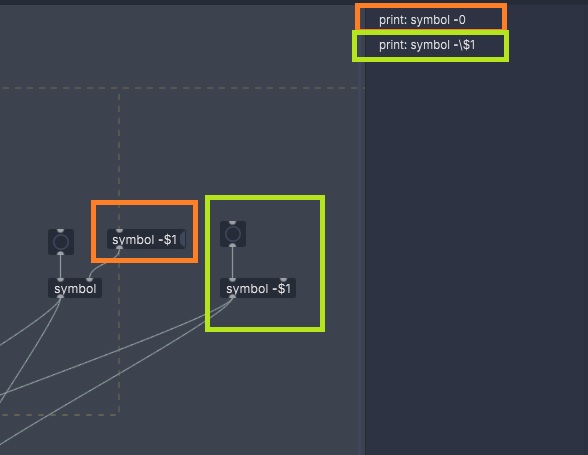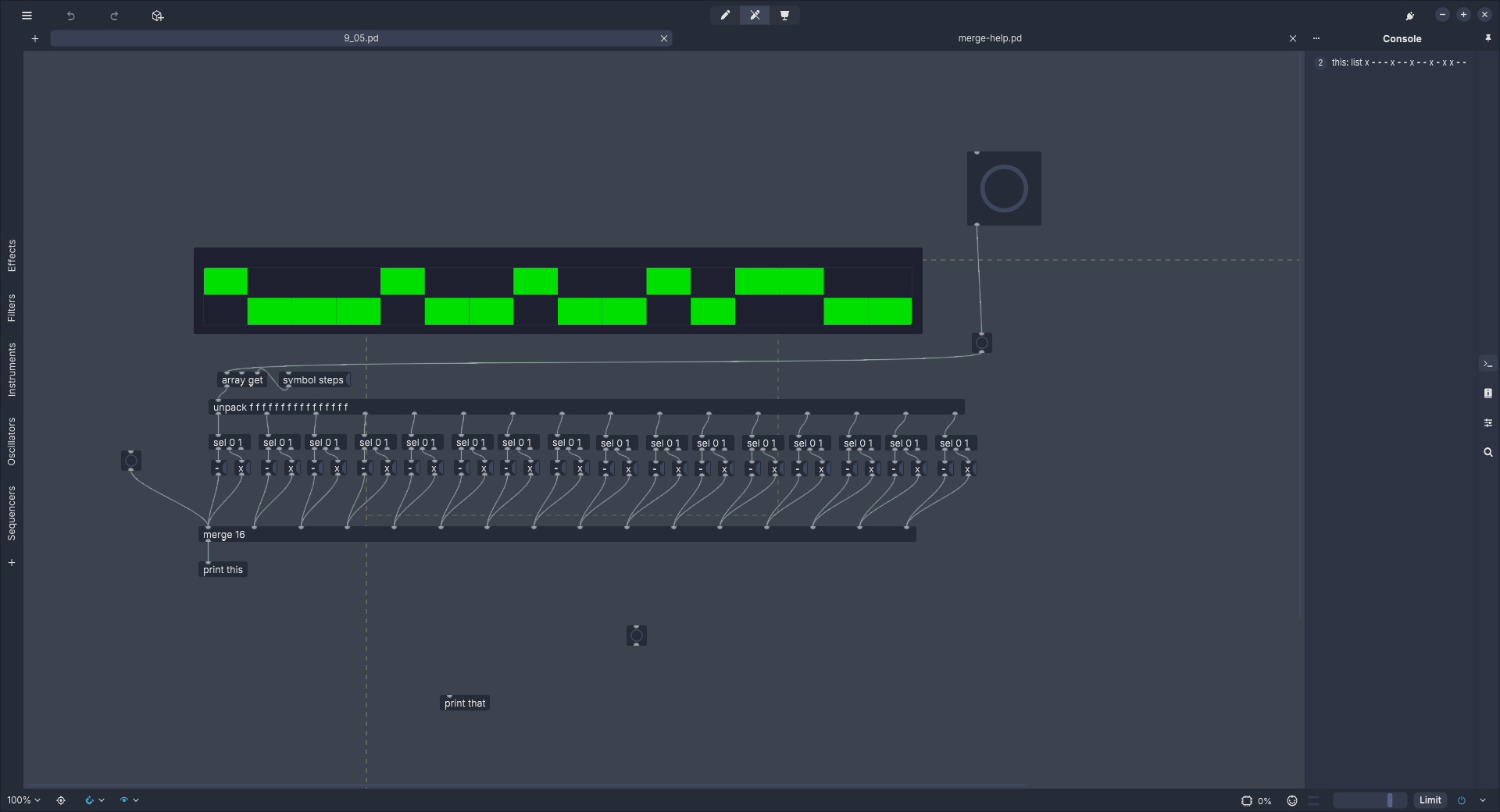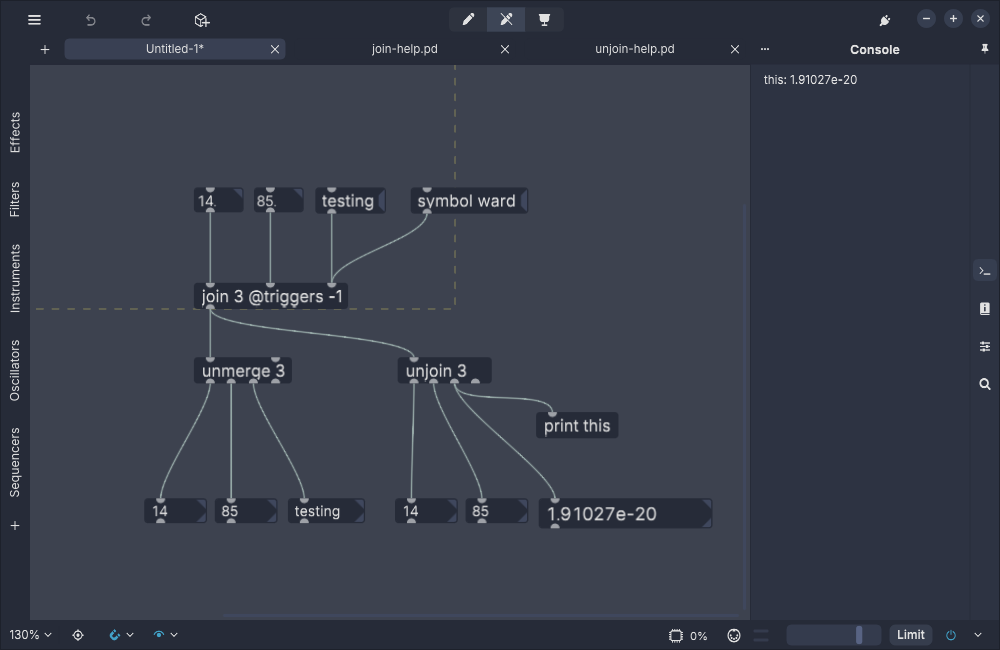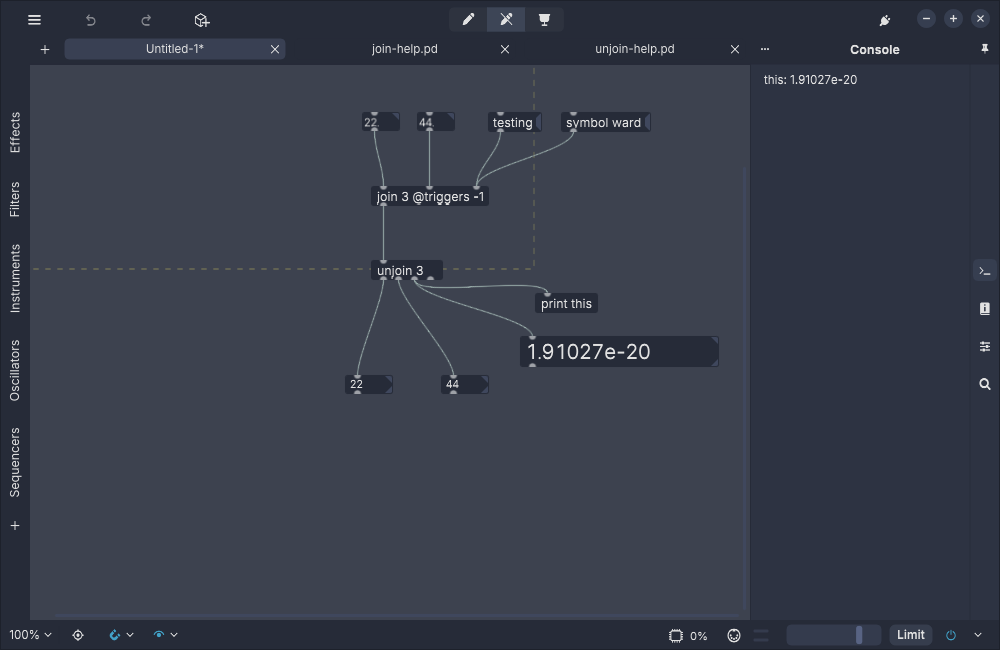-
gentleclockdivider
posted in technical issues • read moreThanks
I already knew how to get the $0 into messages by using [float ] , and [symbol] for getting it into text-get etc..
Was just wondering of it's behaviour when "- 'was nvolved -
gentleclockdivider
posted in technical issues • read moreIf I put "symbol -$1" in a message box into the irght inlet of {symbol} object, get : -0 in the console
If i put it directly into [symbol] , I get : -$1 in the console , it adds an escape backlash character

Also , $0 in symbol just gives symbol , $0- gives us the unique id
-
-
gentleclockdivider
posted in technical issues • read moreI also encountered another issue with merge
When I unpack an Array get into 16 floats ( converting to symbols ) into a merge 16 , the object prints twice
9_05.pd

If you click on one of messages (-,x) in the first inlet of merge 16 it will output a list as expected becauseit's hot , but so does the 13 th input ..which is weird@ porres , If you don't mind I will post this on the discord/else forum since it's out of the scope of this topic .
Thanks everybody for the suggestions . -
gentleclockdivider
posted in technical issues • read moreEither way , else merge -unmerge is great , good job !
I don't see any benefit in using pack anymore when combining floats - symbols .
Thanks ! -
gentleclockdivider
posted in technical issues • read moreUnjoing a symbol
Join 3 where third inlet is symbol
Then unjoin 3 , third outlet is a decimal : 1.91027e-20
Unmerge otoh is working correctly

-
gentleclockdivider
posted in technical issues • read more@porres
Wow , amazed that Cyclone has join .
Sadly unjoin it not behaving as it should when unjoining characters-symbols
-
gentleclockdivider
posted in technical issues • read moreTrue to that , some of pd modules are more flexible
List store appart from storing lists can also be used as a lookup ( get $1 ) , in max you need zl lookup etc..
Will try , thanks guys for the answers -
gentleclockdivider
posted in technical issues • read more@seb-harmonik.ar
That's exactly what thought
Is there any way how to actually see how pack works internally , or any other object for that matter . ?@ oid , interesting
How did you find out that pack works like that ,( not that I doubt your expertise at all ) ?Max has this wonderfull object in the pack family called join ( not zl - join ) it accepts everything no matter the selector .
You just give it the nr of input arguments and the hot inlet port ( all if needed )
Really wish pd has someting like that -
gentleclockdivider
posted in technical issues • read moreThanks , but dont you mean "many NON vanilla objects go against vanillas standard behaviour ? "
But what if the first inlet is not a list it unpacks, like in my examples ?
